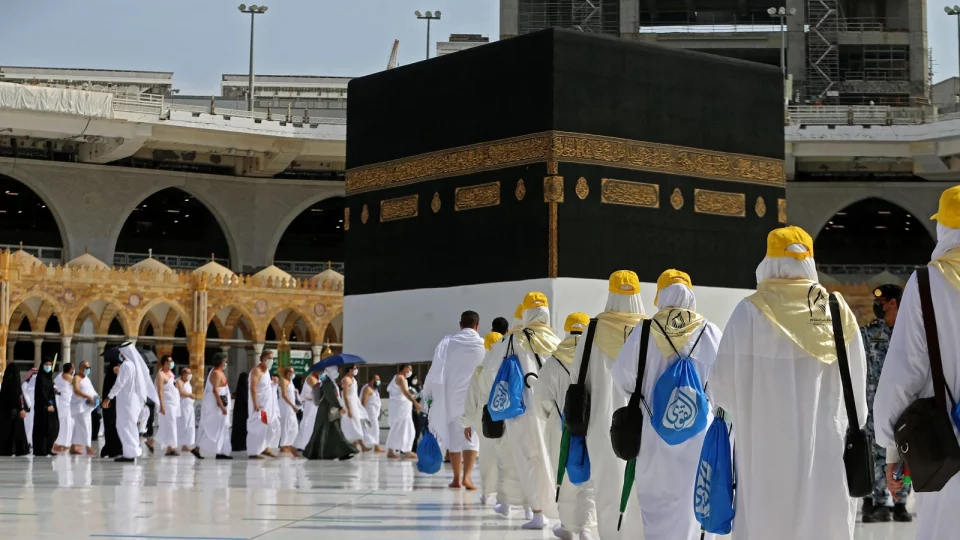The annual Hajj pilgrimage, one of the five pillars of Islam, will start on Wednesday with one million vaccinated Muslims from around the world allowed to take part this year.
In 2019, some 2.5 million pilgrims from around the world participated.
But then the COVID-19 outbreak forced Saudi authorities to dramatically downsize the Hajj, and just 60,000 fully vaccinated citizens and residents of the Kingdom took part in 2021 up from a few thousands in 2020.
All Muslims are expected to complete the Hajj to Mecca at least once in their lives if they have the means to do so.
Believers converge on the holy city for several days of rituals in which they retrace the Prophet Mohammed’s last pilgrimage.
Here is a rundown of the ceremonies at what would usually be one of the largest religious gatherings in the world.
White garments
Pilgrims must first enter a state of purity, called Ihram, which requires special dress and behavior.
Men wear a seamless white garment that emphasises unity, regardless of social status or nationality.
Women must wear loose dresses, also white, exposing only their faces and hands.
Pilgrims are not allowed to argue or bicker and are prohibited from wearing perfume, cutting their nails, or trimming their hair or beards.
Rituals begin
The first ritual requires walking seven times around the Kaaba, the large black cubic structure at the center of Mecca’s Grand Mosque.
Made from granite and draped in a heavily-embroidered cloth featuring verses of the Koran, the Kaaba stands nearly 15 meters (50 feet) tall.
Muslims turn towards the Kaaba to pray, no matter where they are in the world.
Pilgrims next walk seven times between two stone spots in the mosque.
They then move on to Mina, around five kilometers (three miles) away, ahead of the main rite of the pilgrimage at Mount Arafat.
Mount Arafat
The climax of the Hajj is the gathering on Mount Arafat, about 10 kilometers (six miles) from Mina, where it is believed that the Prophet Mohammed delivered his final sermon.
Pilgrims assemble on the 70-meter-high (230-foot) hill and its surrounding plain for hours of prayers and Koran recitals, staying there until the evening.
After sunset they head to Muzdalifah, halfway between Arafat and Mina, where they gather several dozen pebbles so they can perform the symbolic “stoning of the devil.”
‘Stoning the devil’
The last major ritual of the Hajj is back at Mina, where pilgrims throw seven stones at each of three huge concrete walls representing Satan.
The ritual is an emulation of Abraham’s stoning of the devil at the three spots where it is said Satan tried to dissuade him from obeying God’s order to sacrifice his son, Ishmael.




